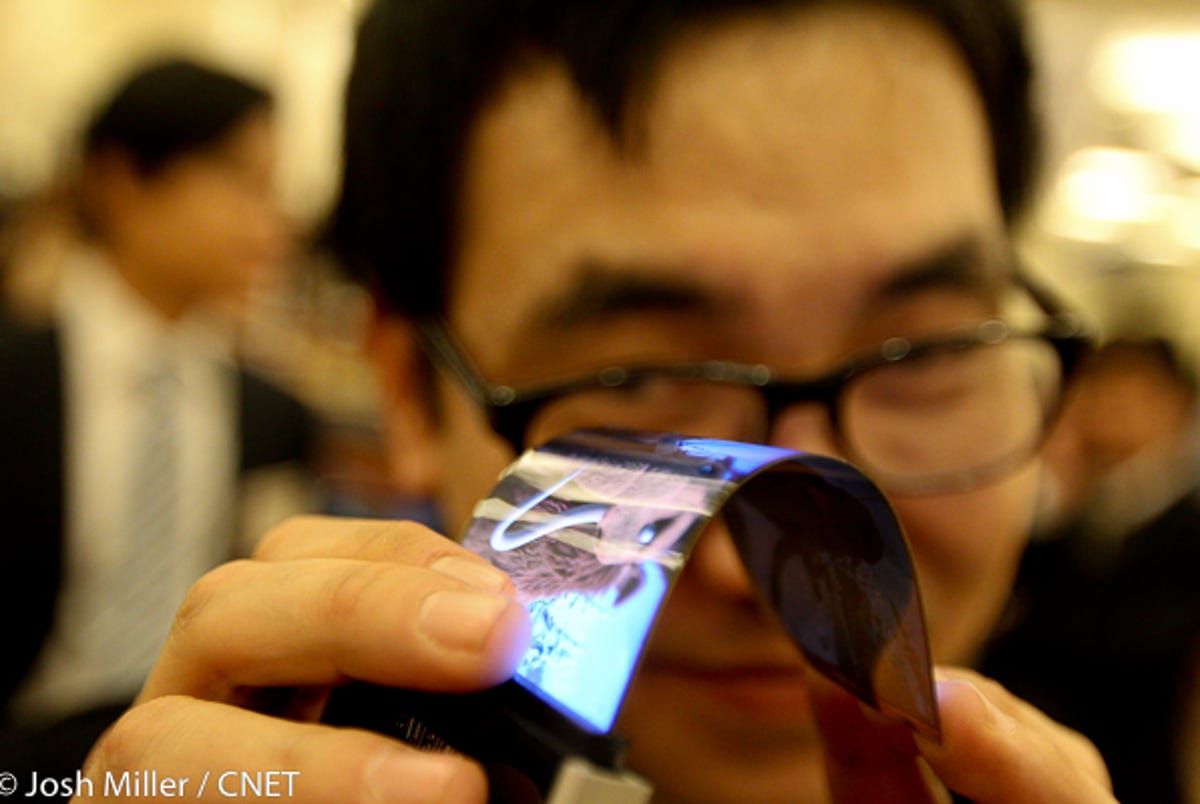
Josh Miller/CNET
An Apple patent application, published today by the US Patent and Trademark Office (USPTO) describes a new method for using metal in flexible displays to maximize conductivity without breaking components.
As flexible displays become more popular, companies are discovering an issue: the metal behind the displays used as conductive material can easily break. Some companies have tried to replace the metal with organic material to sidestep that issue, but the conduction is not nearly as high compared to metal.
Apple’s patent application, published on Thursday and earlier reported on by Patently Apple, tries to solve that problem. The company has created a technique that would allow flexible displays to use metal as conductive material, but rather than craft the metal in straight lines, the “metal traces” are bent to enhance their strength.
According to Apple’s patent, its technology employs “serpentine metal traces” that are capable of stretching — not breaking — whenever a flexible display is bent. Apple says that its technology works so well, displays can be entirely folded and the metal still would not break.
Although the patent application describes ways in which Apple’s technology could be employed in smartphone displays, it’s not clear whether it will actually come to the iPhone. Apple files for patents all the time, and in many cases, those technologies never make their way to devices. Still, flexible displays are slowly inching their way to the market, and it shouldn’t surprise anyone if Apple joins the fray.
CNET has contacted Apple for comment. We will update this story when we have more information.



